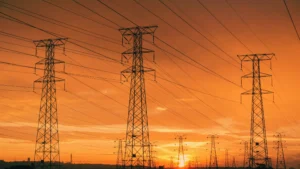Why advanced planning is critical to strengthening your utility's supply chains
Transmission and Distribution (T&D) utilities are operating on high alert. Over the past few years they’ve been managing through an increased number of black swan events that have impacted their strategic capital investment plans. It’s been a delicate balancing act dealing with each of these events, as well as contending with the ripple effects on the global supply chain.
These disruptions have boosted supply chain management up to a mission-critical function. Should any essential grid components become deteriorated or disabled, it could become mission impossible to avert severe grid infrastructure degradations and hazardous failures.
Planning for the unplanned
Utilities have always had to work around things that are out of their control; currency swings, market volatility, regulatory compliance, changing priorities. All of which are unavoidable and have heavy business implications.
But unexpected doesn’t mean unpredictable.
No one has a crystal ball to foresee significant, global, one-off events. But when it comes to supply chain management, utilities can and should be foreseeing any possible risk and have strategies tailored to meet them ready to implement. Then they must proactively re-evaluate these strategies to make sure they minimize impact, because you can prepare for inevitable impacts.
Forecasting how much volatility you can absorb is the first part of the puzzle, but the second part, the strategic plan on how to best mitigate them, is perhaps even harder.
Know the decisions you need to be making
Utility companies are finding it increasingly difficult to purchase infrastructure equipment at an expected pace that adequately enables them to service customers, while complying with resiliency and regulatory standards. One disruption in the supply chain can create a whirlwind effect that could derail asset management strategy plans aimed at long-term infrastructure resilience.
Examining the vulnerability of your assets and identifying any future risks with capital planning technology will help you make data-driven decisions on which decisions need to be made, so that you can follow the optimal course of action. With supply chain management’s new mission-critical role, utility decision-makers will need to be hyperaware of their breaking points and be more proactive in foreseeing potential procurement shortcomings.
Resource allocation: Do I buy now, or do I wait?
When it comes to your asset planning management, do you know if you are currently underinvesting to overinvesting? All decisions have trade-offs that affect your budget, and the decisions you make today need to account for a range of possible futures. What you want to ensure is that you have as many options as possible, to avoid being backed into a corner with no lifeline to get you out.
Procurement isn’t simple, especially when it comes to critical infrastructure. Do I buy in advance at a reasonable price and deal with asset degradation? Or do I offset capital expenditure, with higher operational expenditure, but run the risk of not being able to maintain my infrastructure?
What plan does your utility have in place if one of your transformers fails tomorrow? Assets like these are ordered years in advance; you aren’t ordering them from Amazon after all. In today’s context, even if you had the upfront capital to buy a new one, there aren’t any in stock.
What if you don’t have enough cash flow to do the repairs needed to get the transformer back up and running?
What if you don’t have the workforce to execute the maintenance?
What is the risk of each of these variables worth?
Problems are rarely siloed, but when it comes to supply chains, they’re more like dominoes. So, you need to be able to see a problem from many different angles, so you can build decision trees that interconnect to get real insight into your current and possible and future states.
If you are proactively managing your strategic assets and had known in advance the likelihood that this transformer might fail, as well as the impacts that would likely follow on from that, you could have mitigated that risk.
Tighter collaboration with OEM partners to take on uncertainties
In response to the rapidly shifting landscape and its unprecedented supply chain challenges, T&D utilities should also look to deepen collaborations with current original equipment manufacturers (OEM) partners to pin down supply chain strategies in a more proactive and agile manner following pandemic vulnerabilities and challenges in staffing, production stagnations, and material shortages.
Decision-makers should gauge all risks to achieve optimal investment of time, energy, and resources. A tighter collaborative partnership can help overcome the challenges of inaccurate prioritization of deliverables and imprecise supply market vision.
Expect risk and expand your technology
Supply chain issues will always be around, but now more than ever before, there is an urgency for utilities to assess the state of their ageing infrastructures, and the risks they pose to their strategic asset management plans aimed at long-term infrastructure resilience.
Utilities should become faster and more accurate in rebalancing evolving priorities, risks, costs, and levels of service. Supply chain disruptions and uncertainties around internal demand planning could then be curtailed and accounted for years in advance. Innovative technology, agile enough to rapidly change gears to adapt to spontaneous changes, is essential.
More and more organizations are looking at AIP software to be able to understand and visualize their exposure, so they can implement a robust mitigation strategy. AIP assists decision-makers with visibility and analytics for supply shortage contingency planning. It allows them to foresee and evaluate both the potential impact and outcome of all decisions related to delays and disruptions, mitigating risks and logistical ruptures in the supply chain.
AIP is agile in prioritizing business models and resetting investment strategies based on “what-if” scenario analysis, which considers all uncertainties that could disrupt the supply chain flow on the short-, medium-, and long-term.



